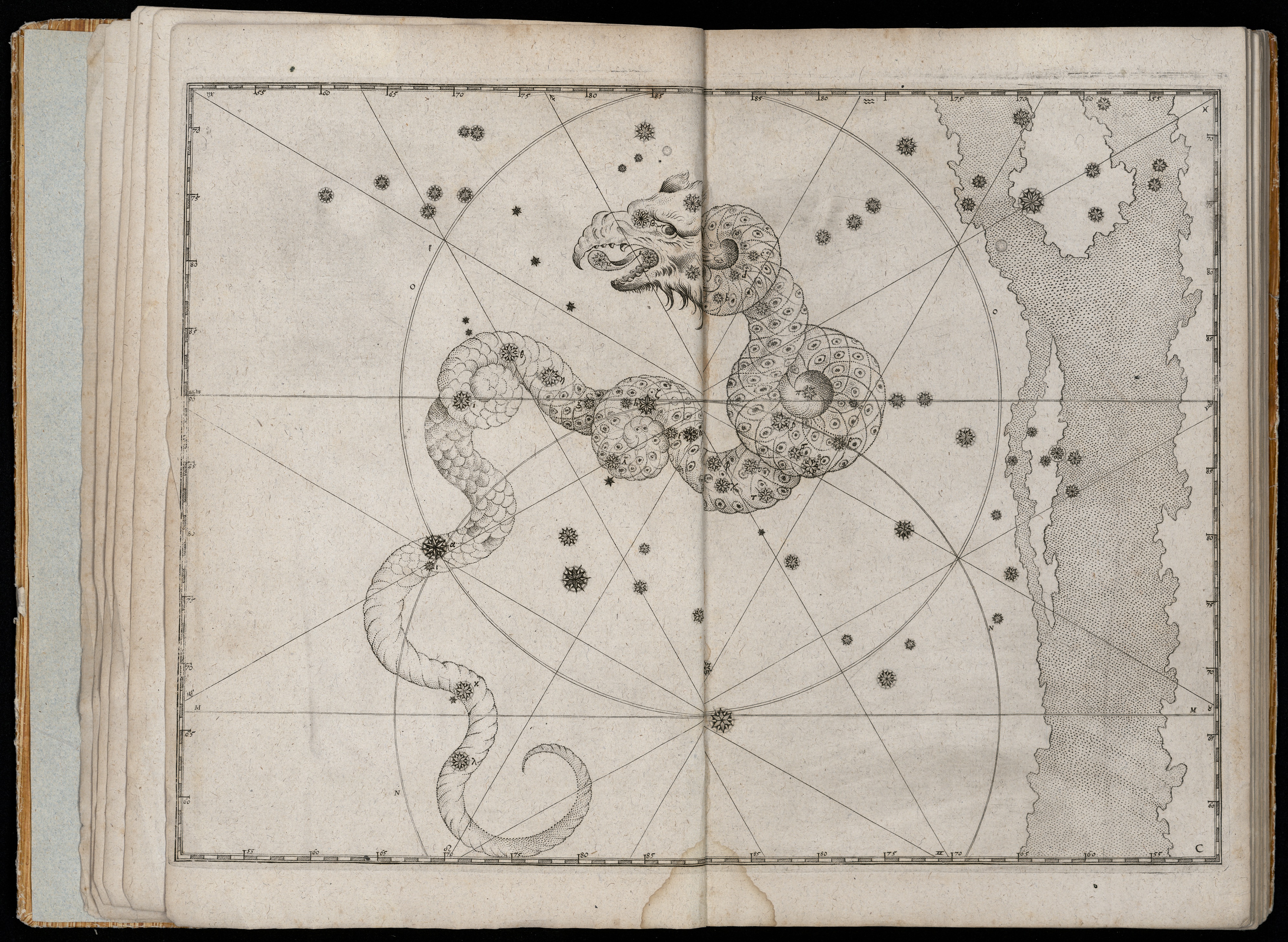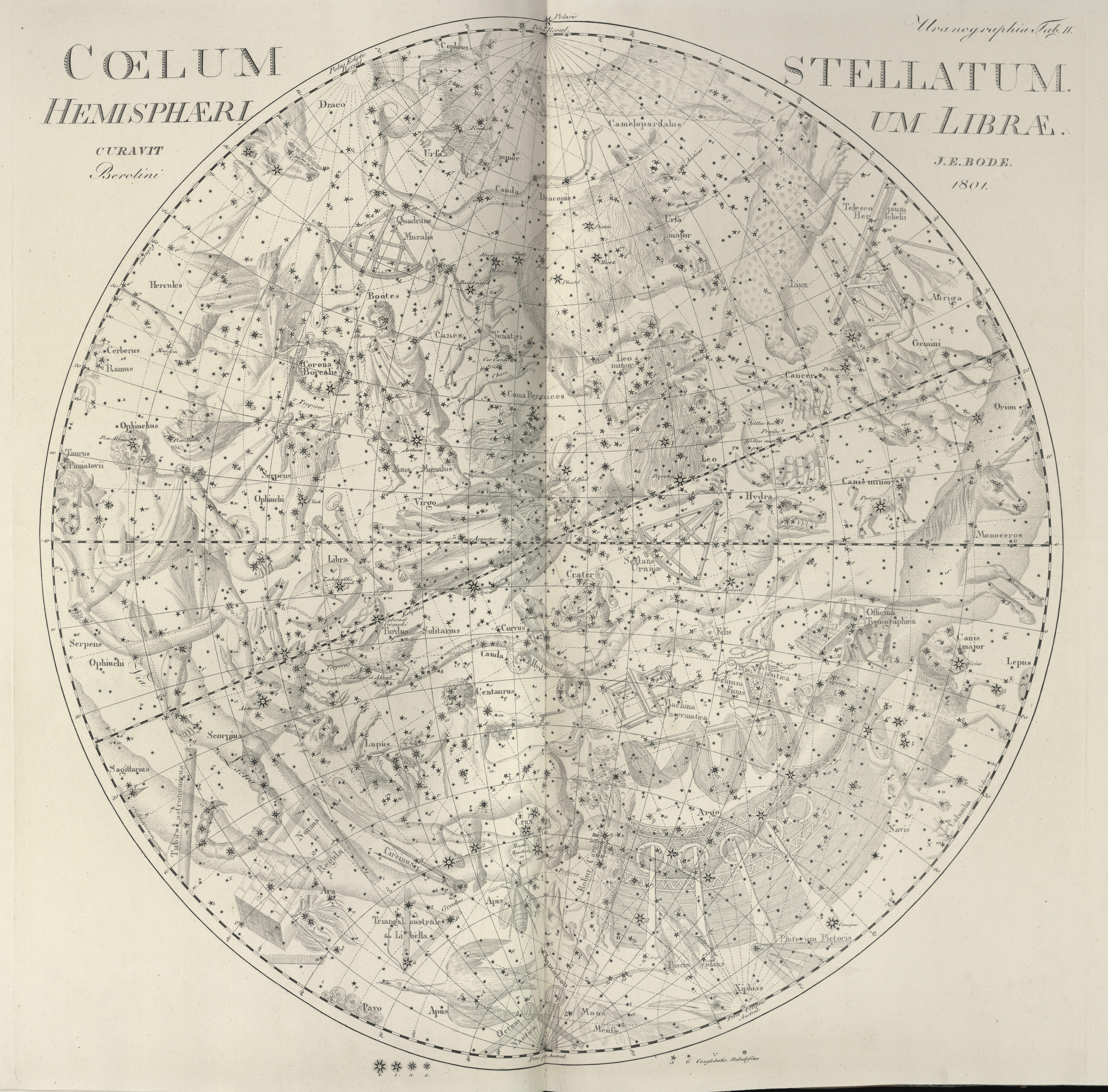Dra - Draco the Dragon
Intro and Visual description
Draco occupies over 1,000 square degrees in the sky as it winds from the Pointers of Ursa Minor nearly to Vega in Lyra. Yet it has no bright stars.
Special Stars
Draco’s most famous star is Alpha-Draconis, or Thuban, although it is only the 8th brightest star in Draco. Thuban was closest to the north celestial pole in 2830 BC, not long before the Egyptian pyramids were constructed (instead of Polaris; see precession). Magnitude: 3.6, much fainter than Eltanin, although it has been known to vary. Distance: 230 LY.
Two stars of Draco are very near: Chi-Draconis is only 25 LY away; Alrakis (Sigma-Draconis) is only 18.5 LY. Alrakis is only about a third as bright as the Sun.
Gamma-Draconis, or Eltanin, is the brightest star of Draco, magnitude 2.2. Eltanin is part of Draco’s head. It is famous for being the star observed by the 18th-century English astronomer James Bradley when he was trying to detect parallax and so calculate the distance. No parallax was observed (the stars are too far away to be measured in that manner), but during the course of a year, the position of Gamma-Draconis in his telescope moved around in a tiny circle. This was not parallax, but what was it? Bradley had discovered what is called aberration, an effect due to the motion of the Earth. Bradley’s telescope was pointed directly up at the zenith, where Gamma-Draconis was located at his latitude. Consider an analogy between his telescope and an umbrella: Have you ever angled an umbrella forward when walking in the rain to keep dry, lest the rain seem to fall toward your face instead of straight down? Similarly, just as we might walk through the rain, so the Earth moves through space, and the light coming straight down into Bradley’s telescope from above seemed to fall toward his face, just as the rain would get one wet unless one were standing still. Aberration means that a star is not where it may appear to be in a telescope, due to the motion of the Earth which displaces the beam of light as it passes through the telescope--because the telescope is not stationary, but moving with the Earth at great speed just like someone carrying an umbrella slanted forward in the rain.
Origin and History
Draco is included in the ancient star catalogs of Eudoxos of Knidos, Aratos of Soli, and Ptolemy.
Skylore, Literature and Culture
To the Babylonians, Draco was Tiamat, a dragon killed by the sun god in the creation of the world.
To the Greeks, Draco guarded the Golden Apples of the Sun in a magical garden.









